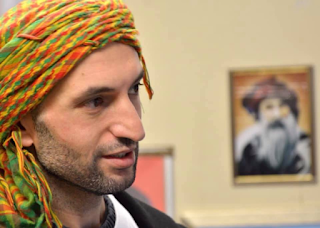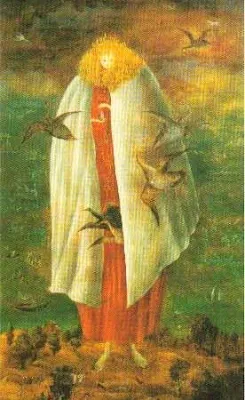This week marks the 30th anniversary of the massacre of hundreds if not thousands of unarmed peaceful pro-democracy protesters in Beijing and the arrest of tens of thousands of demonstrators in cities across China.
The Tiananmen Massacre was precipitated by the peaceful gatherings of students, workers, and others in Beijing's Tiananmen Square and other Chinese cities in April 1989, driven by the hope for a better future, they were simply calling for freedom of the press and for some government accountability, and the imminent problems of corruption, and began the largest political protest in the history of Communist China. The government responded to the intensifying protests in late May 1989 by declaring martial law.Overnight on 3 to 4 June, the government sent tens of thousands of armed troops and hundreds of armoured military vehicles into the city centre to enforce martial law and forcibly clear the streets of demonstrators. The government wanted to 'restore order' in the capital.
As they approached the demonstrations, troops opened fire on crowds of protesters and onlookers. They gave no warning before they started shooting.A night of bloodshed on June 3rd resulted with over 2,000 of protestors being killed.As the troops kept firing into the crowds, some of those running away were shot in the back. Others were crushed to death by military vehicles. Brave, innocent, the Chinese government has never accepted responsibility for the massacre or held any officials legally accountable for the killings. despite individual souls, shotdown and massacred triggering shock and outrage across the world.
Tank Man
The Tiananmen protests were immortalised in Western media on 5 June through the image of a lone man in a white shirt carrying shopping bags, facing an imposing column of military tanks sent by the government to disperse protesters. The man is known simply as Tank Man: his identity has never been confirmed.
Tank Man would not let the military vehicles pass. He succeeded. Eventually, he was pulled out of the way of danger by onlookers. But the image of unarmed man versus tank quickly came to symbolise the struggle of the Tiananmen protesters - peaceful protest met with military might.
'It demonstrates one man's extraordinary courage, standing up in front of a row of tanks, being prepared to sacrifice his own life for the sake of social justice' Stuart Franklin, Tank Man photographer
Stuart Franklin took the Tank Man photograph. In the short film below he talks about how he came to capture what would become one of the most iconic images of the twentieth century.
In the aftermath long prison sentences were given out, one of which was for 17 years for simply throwing paint at a portrait of Mao Zedong. We should take a minute and think about those sacrifices and all those who died, so that their actions have not been in vain. Sadly brutal suppression and censorship has continued to this day, that condemns the Chinese nation and its people to a future without freedom.
Today many activists are still being ruthlessly persecuted by the Chinese Authorities, and the climate of free expression remains stifling, with scores of writers still being silenced, also many social media sites are still banned, and three decades later, China, under President Xi Jinping, is undergoing the worst crackdown on human rights since the Tiananmen massacre. Hopes that China would gradually liberalize politically as it opened up economically have been dashed.
The Chinese regime to this day continues to bury the truth of what happened in Tiananmen Square on June 4, 1989. Tiananmen remains one of the most censored issues in an internet and social media environment that has become increasingly restrictive since Xi Jinping became president in 2012.Young Chinese below the age of 35 today either know nothing about it or believe that it was the protesters who were the criminals. A regime that sent tanks and guns to slaughter its people now seeks to hide the evidence, threaten its critics, eliminate alternative ideas and impose absolute control. Seeking to suppress every form of freedom, with Pro-democracy activists being jailed, and in every corner of China's territory, from Xinjiang to Hong Kong, that has also seen critics abroad being intimidated, threatened and, in the worst cases, kidnapped.The Chinese government has never accepted responsibility for the massacre or held any officials legally accountable for the killings. It has been unwilling to conduct an investigation into the events or release data on those who were killed, injured, forcibly disappeared, or imprisoned.
For those who participated or observed the events of 1989, however, the search for truth goes on. Memories have not faded. Indeed, as the Tiananmen Mothers — a group set up by the mothers of some of the student leaders — said in a statement translated by Human Rights in China: "The hard facts of the massacre are etched into history. No one can erase it; no power, however mighty, can alter it; and no words or tongues, however clever, can deny it."
The Chinese government should acknowledge and take responsibility for the massacre of pro-democracy protesters in June 1989, Human Rights Watch said recently. Authorities should immediately release activists held for commemorating the occasion, and cease censoring discussions of the bloody crackdown.
"Twenty-nine years after the Tiananmen Massacre, President Xi Jinping's 'China dream' means getting the world to forget about it. But suppressing the truth has only fueled demands for justice and accountability," said Sophie Richardson, China director at Human Rights Watch. "The only way to remove this stain on China is to own up to it."
The Chinese government continues to this day to deny wrongdoing in the brutal suppression of the protests. Authorities covered up the killings, failed to bring to justice the perpetrators, and persecuted victims and survivors' family members. Under President Xi Jinping, the government has further retreated from the democratic ideals the protesters advocated and is aggressively tightening ideological control, attacking civil society groups, and imprisoning rights activists. In March 2018, Xi eliminated term limits for the presidency, spelling an ominous future for the direction of the country.
As in the past, Chinese authorities are quashing efforts to commemorate the Tiananmen crackdown:
Since late May, Beijing police have put a group of activists, including He Depu, Zha Jianguo and Xu Yonghai, under house arrest.
Activist Hu Jia said police informed him that between June 1-5 he would be taken to Qinhuangdao, 300 kilometers away from his home in Beijing.
In Shandong province in mid-May, authorities detained activists Li Hongwei and Yu Xinyong, accusing them of "picking quarrels and provoking trouble." Li and Yu were detained for two days last year for commemorating the massacre.
In June 2017, Beijing police detained activist Li Xiaoling after she posted photos online of her standing at Tiananmen Square and holding a sign that read "June 4th Marching to the Light." Li was later charged with "picking quarrels and provoking trouble." Li's lawyers alleged that Li has been tortured in custody and denied adequate medical treatment for glaucoma.
Activists Chen Bing, Fu Hailu, Luo Fuyu, and Zhang Junyong, detained since May 2016 for producing and selling a liquor named "Eight Liquor Six Four" – a homophone for "89.6.4," the numerical date of the massacre – are still awaiting trial. The four have been charged with "inciting subversion of state power."
Sichuan-based activist Chen Yunfei, convicted of "picking quarrels and provoking trouble" in March 2017, is serving a four-year sentence for organizing a memorial service for victims of the massacre.
While the last individual known to have been imprisoned for his involvement in the 1989 pro-democracy protests was released in 2016, many other participants have been re-incarcerated for their continuing pro-democracy work. Activists Liu Xianbin and Chen Wei are serving 10-year and nine-year sentences respectively on inciting subversion charges, while Guo Feixiong is serving a six-year sentence for protesting press censorship. Huang Qi, detained since November 2015 for "illegally leaking state secrets abroad," is awaiting trial. Huang suffers from several health conditions for which he has not been given adequate treatment.
Other prominent participants in the Tiananmen protests have passed away in the past year. In July 2017, public intellectual and Nobel Peace Prize Laurate Liu Xiaobo, a leader in the protests who was jailed for 21 months for his role supporting the students, died from complications of liver cancer in a hospital in Liaoning province while being guarded by state security. His wife Liu Xia remains under house arrest. Dissident writer Yang Tianshui, who participated in democracy protests in Nanjing at the time, died in November 2017, three months after being released on medical parole for a brain tumor. Prior to his release, Yang was serving a 12-year sentence for "inciting subversion of state power."Today sadly the persecution of the Uyghurs, Falun Gong and Tibetan Buddhists combined with the repression of Christianity contnues with an estimated one million or more incarcerated in prison camps.
"Chinese leaders travel the world touting their ideas for 'win-win' human rights diplomacy and a 'community of common destiny,'" Richardson said. "But until they account for past and present human rights abuses, those pledges are just empty propaganda promoting impunity for grave crimes."
The nongovernmental organization Tiananmen Mothers, consisting mostly of family members of those killed, has established the details of 202 people who were killed during the suppression of the movement in Beijing and other cities. Last year, more members of the Tiananmen Mothers have passed away without seeing justice, including geologist Xu Jue and music professor Wang Fandi. Xu's 20-year-old son Wu Xiaongdong and Wang's 19-year-old son Wang Nan were killed by troops.
Human Rights Watch urges the Chinese government to mark the 30th anniversary of the Tiananmen massacre, by addressing the human rights violations pertaining to the event. Specifically, the government should:
Respect the rights to freedom of expression, association, and peaceful assembly, and cease the harassment and arbitrary detention of individuals who challenge the official account of June 4;
Meet with and apologize to members of the Tiananmen Mothers, publish the names of all who died, and appropriately compensate the families of the victims;
Permit an independent public inquiry into June 4, and promptly release its findings and conclusions to the public;
Allow the unimpeded return of Chinese citizens, exiled due to their connections to the events of 1989; and investigate all government and military officials who planned or ordered the unlawful use of lethal force against peaceful demonstrators, and appropriately prosecute them.
The spirit of the Tiananmen movement continues to burn in the hearts of veterans of 1989 and younger generations of activists who fight for a more just China. President Xi Jinping should acknowledge, even in the face of extraordinary persecution, that demands for accountability and human rights remain strong.We must continue to support all those that fight against state oppression and censorship and never forget the tragic legacy of Tinanamen Square that continues to haunt us.
https://www.hrw.org/news/2018/05/31/china-answer-tiananmen-massacre-calls-justice






















